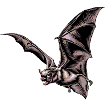Museum, University of Nebraska State

University of Nebraska State Museum: Mammalogy Papers
Document Type
Article
Date of this Version
2-7-2001
Citation
Special Publications, Texas Tech Museum (February 7, 2001), number 43.
Abstract
Because the islands in the Caribbean long have interested students of mammals and zoogeography, considerable information has been published concerning the biology of the Antillean mammalian fauna in the past three decades (Jones and Schwartz, 1967; Schwartz and Jones, 1967; Koopman, 1968, 1989; Jones and Phillips, 1970, 1976; Varona, 1974; Baker and Genoways, 1978; Baker et al., 1978; Swanepoel and Genoways, 1978; Jones and Baker, 1979; Silva Taboada, 1979; Baker et al., 1984; Eshelman and Morgan, 1985; Buden, 1986; Griffiths and Klingener, 1988; Jones, 1989; Masson et al., 1990; Pederson et al., 1996; Genoways et al., 1998). This increasing interest in the systematics and zoogeography of mammals in the region has involved both studies in the field and re-examination of collections made in earlier years. One problem facing investigators who attempt to assess the faunal relationships of the Antilles is the fact that natural conditions on most islands have been altered significantly as a result of early settlement, first by Ameridians, then by Europeans beginning in the 1500s. Changes wrought by agricultural practices have destroyed much of the original environment, and introduction on many islands of the mongoose (Herpestes javanicus) as a supposed means of controlling introduced rats (both Rattus norvegicus and R. rattus) has disturbed natural conditions.


Comments
Copyright 2001, Museum of Texas Tech University. Used by permission.